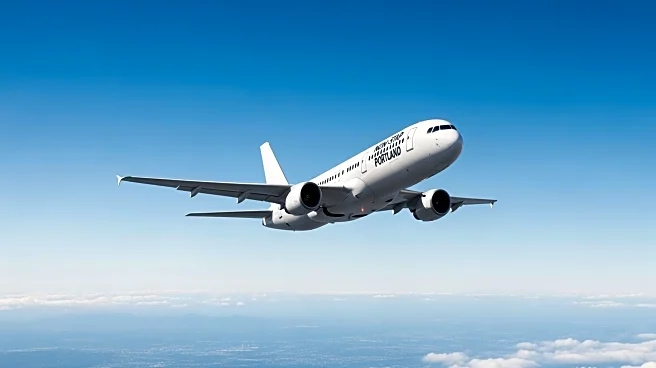What's Happening?
Alaska Airlines has announced significant changes to its domestic flight network for the summer of 2026, focusing on expanding routes in San Diego and Portland while reducing its presence in Los Angeles
and San Francisco. The airline plans to introduce five new year-round routes from San Diego, including destinations such as Dallas/Fort Worth, Oakland, Raleigh/Durham, Santa Barbara, and Tulsa. This expansion is facilitated by the opening of San Diego's new Terminal 1, which offers increased capacity. In Portland, Alaska Airlines will add four new routes, including Baltimore, Idaho Falls, Philadelphia, and St. Louis, with most being seasonal except for Idaho Falls. The decision to cut routes in Los Angeles and San Francisco is strategic, allowing Alaska Airlines to focus on markets with less competition and higher growth potential. The airline will reduce flights from Los Angeles to Las Vegas, Reno, and San Jose, and from San Francisco to Austin, Boston, Burbank, and Newark.
Why It's Important?
This strategic shift by Alaska Airlines highlights the competitive dynamics within the airline industry, particularly in the West Coast market. By expanding in San Diego and Portland, Alaska Airlines aims to capitalize on growing demand and increased airport capacity, potentially enhancing its market share against competitors like Southwest Airlines. The reduction in routes from Los Angeles and San Francisco reflects a calculated move to optimize resources and focus on more profitable markets. This could impact travelers who rely on Alaska Airlines for flights from these major cities, potentially leading to increased fares due to reduced competition. The expansion in Portland also signals a renewed focus on this hub, which had seen stagnation in recent years. Overall, these changes could influence travel patterns and airline competition in the region.
What's Next?
Alaska Airlines will likely monitor the performance of its new routes in San Diego and Portland to assess their viability and profitability. The airline may continue to adjust its network strategy based on market demand and competitive pressures. As the new routes become operational, Alaska Airlines will face competition from other carriers, particularly Southwest Airlines, which has a strong presence in San Diego. The airline's ability to attract and retain customers in these expanded markets will be crucial for its long-term success. Additionally, Alaska Airlines may explore further opportunities to optimize its network, potentially revisiting routes in Los Angeles and San Francisco if market conditions change.
Beyond the Headlines
The decision by Alaska Airlines to expand in San Diego and Portland while reducing its presence in Los Angeles and San Francisco may have broader implications for regional economic development. Increased flight options in San Diego and Portland could boost local tourism and business travel, contributing to economic growth in these areas. Conversely, reduced flights in Los Angeles and San Francisco could impact local economies, particularly in sectors reliant on air travel connectivity. The strategic focus on less competitive markets may also reflect broader industry trends, where airlines seek to maximize profitability by targeting underserved or emerging markets.













